Ireland's Gems: Definitive Guide for Travellers
Ireland’s Gems More than 11 million people travelled to Ireland according to the latest tourism statistics, lured by its lush scenery, historic landmarks, and centuries-old culture. (This number includes visitors to both Northern Ireland, part…
24 Feb 21 · 10 mins read
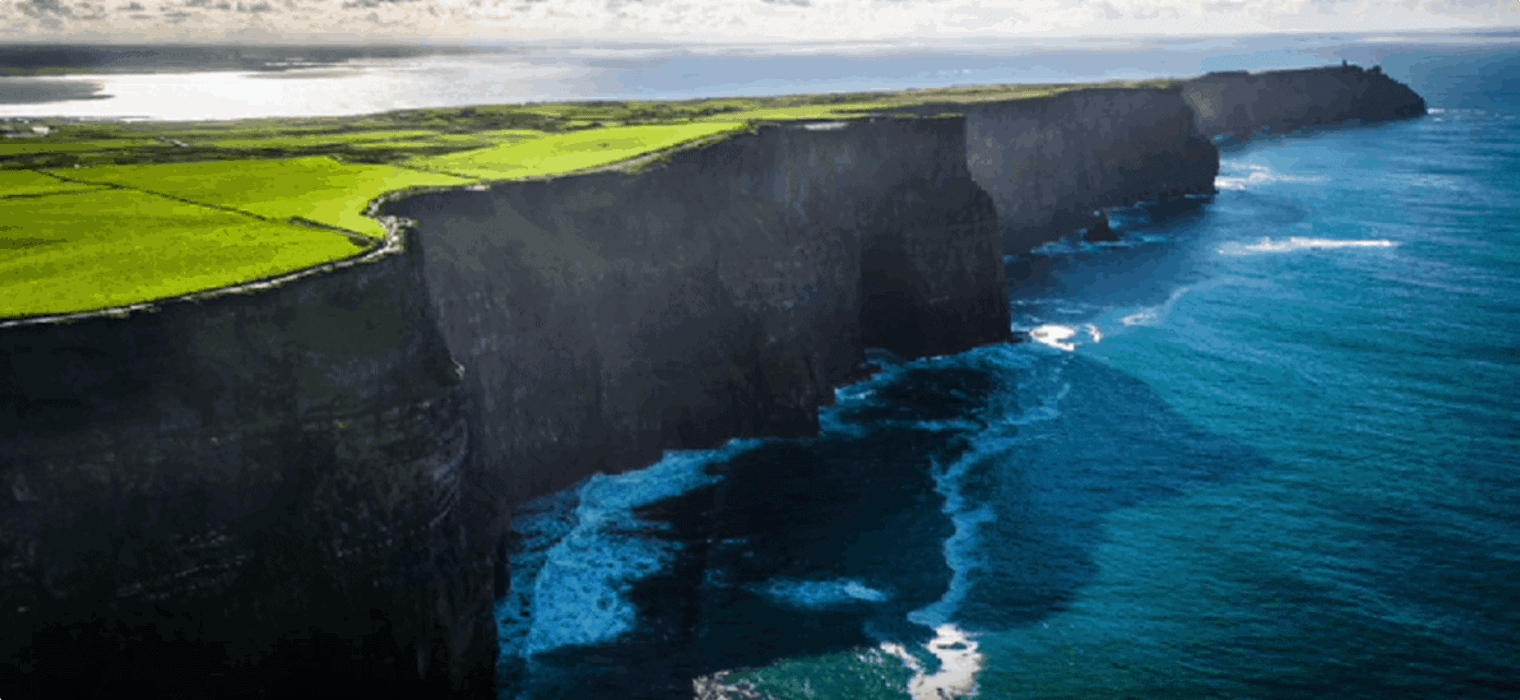
Ireland’s Gems
More than 11 million people travelled to Ireland according to the latest tourism statistics, lured by its lush scenery, historic landmarks, and centuries-old culture. (This number includes visitors to both Northern Ireland, part of the United Kingdom, and the Republic of Ireland.) Its rich folklore lends a romantic, mysterious atmosphere to the Emerald Isle. Similar to a leprechaun’s pot of gold, there are numerous places in Ireland that are hidden–that is, not as well-known as other tourist spots, but are still worthy visits for their beauty and history.
If you are interested to see our tours of Ireland, click here. Our Historic Ireland tour begins in Dublin and then travels clockwise around Ireland to finish in Northern Ireland’s city of Belfast. We will enjoy a guided city tour of Dublin with highlights including St Patrick’s Cathedral, amazing quaint villages, green hills, and other hidden gems. We will see the Book of Kells, the Cliffs of Moher, Giant’s Causeway, and other UNESCO World Heritage Sites. On another tour, the Ireland and Lake district walking tour, we’ll start in Dublin and take you through the dramatic scenery around Ireland and England’s Lake District to finish in Northern Ireland’s city of Belfast. If you are interested in this unique travel experience, feel free to see our full list of Ireland tours.In this post, we will look at the ten hidden gems of Ireland.
Carrick-a-Rede Rope Bridge
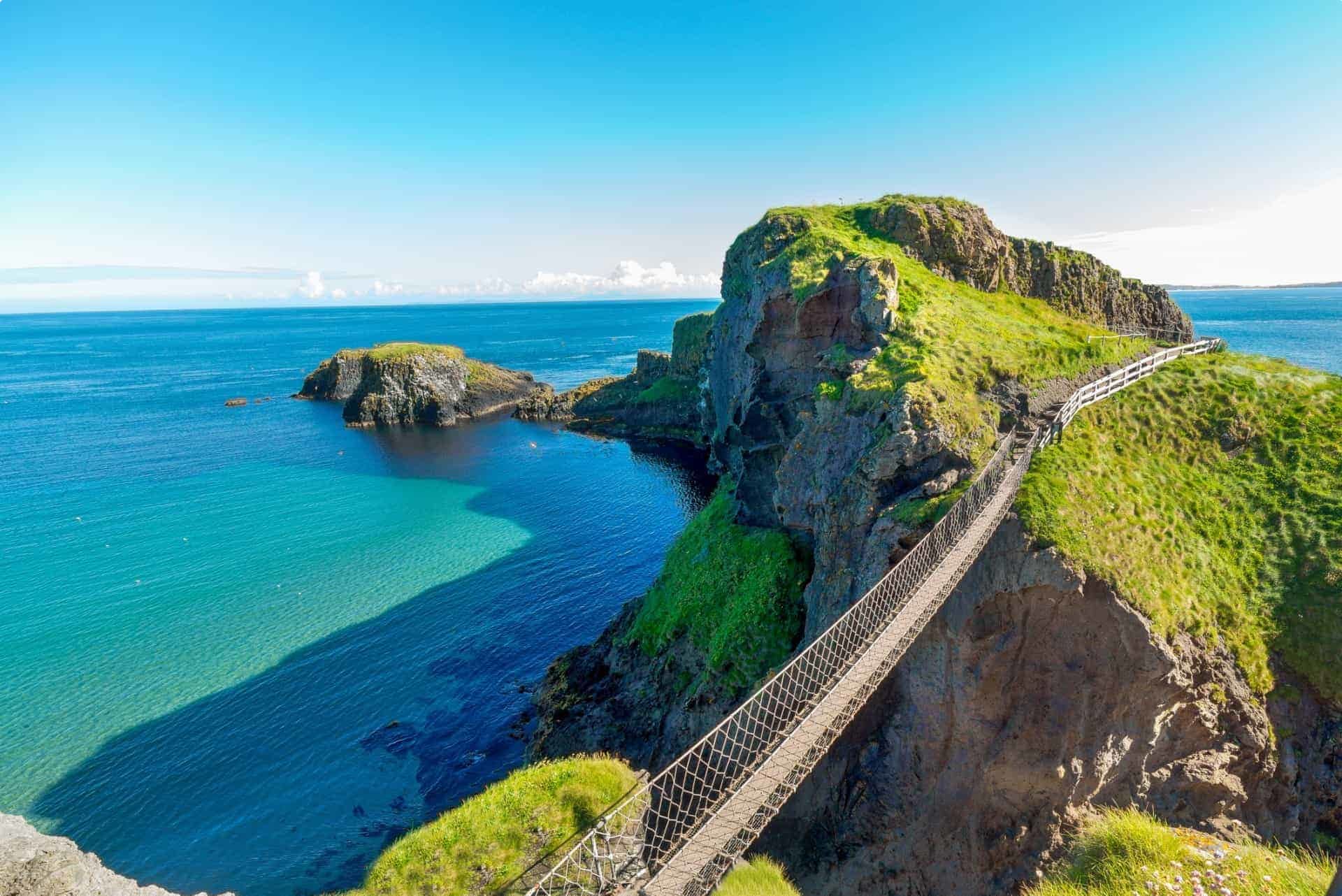
The Carrick-a-Rede Rope Bridge in Country Antrim spans the Atlantic Ocean and connects the mainland with Carrick-a-Rede Island, which is home to a single building, a fisherman’s cottage.
This is not for the faint of heart–the rope bridge is suspended 30 metres (100 feet) above sea level. However, it offers a sweeping view of the sparkling sea and caverns below.
Carrick-a-Rede comes from the Scottish Gaelic “Carraig-a-Rade”, “The Rock in the Road”, because it is an obstacle for salmon migrating to the river where they were born. Atlantic salmon has been caught here since 1620, and the rope bridge was erected in 1755 by fishermen to serve as an additional mode of transport between the mainland and the island. Catches of up to 300 salmon a day were common until the 1960’s, but this soon declined due to pollution, leading to the end of the salmon fishing industry at Carrick-a-Rede.
Carrick-a-Rede is now managed and protected by the National Trust. Visitors can take the scenic coastal walk to the rope bridge, which is open from 9:30 AM to 5:00 PM. Click here for more details.
Slieve League (Sliabh Liag) Cliffs
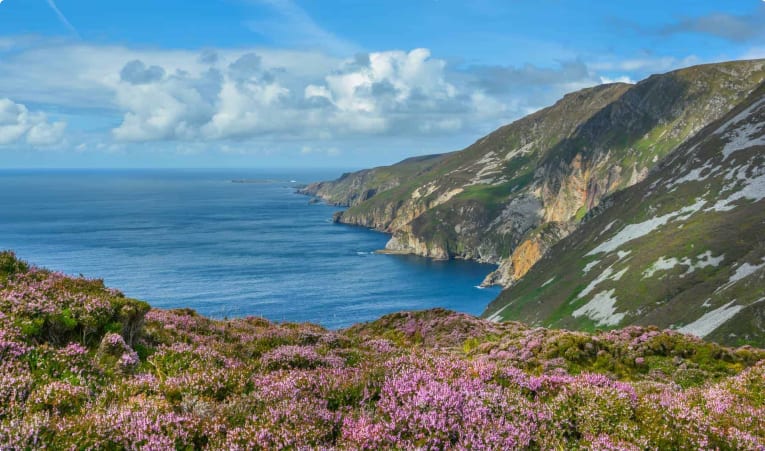
The Slieve League Cliffs at County Donegal are among the highest sea cliffs in Europe. Its highest point rises 609 metres from the Atlantic Ocean below. The family-run Slieve League Cliffs Centre is a worthy stop before heading to the cliffs, with a craft shop that sells locally made items. It hosts a traditional Irish music session during the summer.
Caves of Kesh
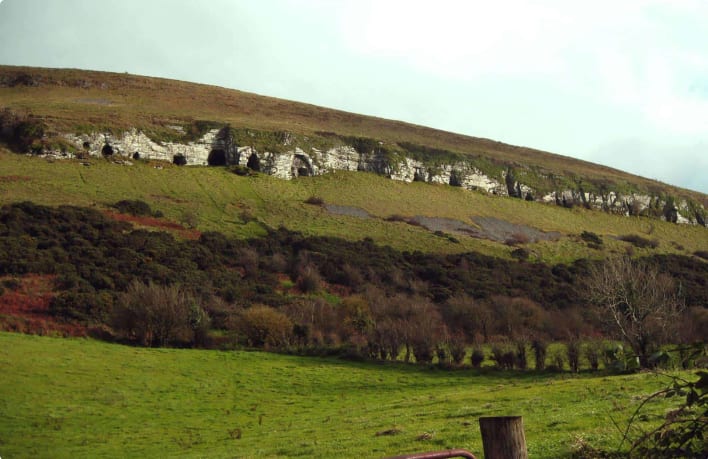
The limestone Caves of Kesh are on the west side of Keshcorran Hill near the village of Keash in County Sligo. It has sixteen chambers, some of them interconnecting. An excavation in 1901 yielded several animal bones, and later explorations saw evidence of human habitation in the caves dating back to the Neolithic period.
The Caves of Kesh figure prominently in Celtic mythology. One story says the ancient Irish banished the Tuatha De Dannan, immortal gods and goddesses, to the Caves of Kesh, but reconciled with them after suffering from famine and disease. Another story says Fionn MacCumhail of the Fianna (a band of warriors in Irish myth) was captured and imprisoned in the caves by the “Hags of Winter” of the Tuatha De Danann as punishment for trespassing.
The spectacular views from the caves makes it clear why the Caves of Kesh were imbued with stories of magic and legend. Travellers who wish to reach the caves are recommended to wear good walking boots as the climb is steep and can be slippery.
Farmleigh House and Estate
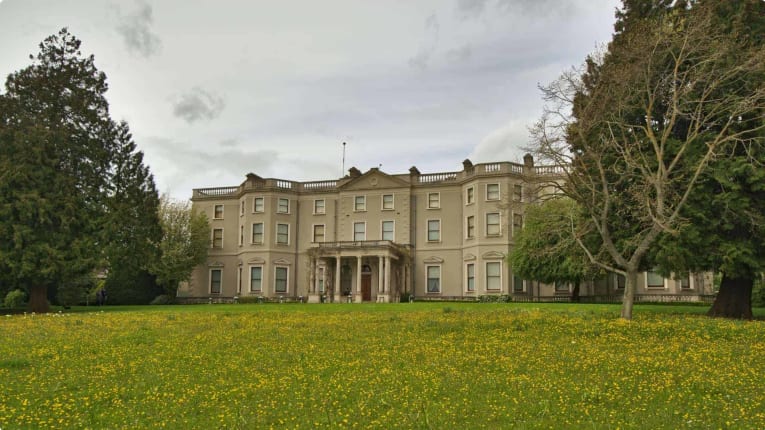
The historic Farmleigh House and Estate on Dublin’s Phoenix Park was bought in 1873 by Edward Cecil Guinness, the 1st Earl of Iveagh, as a “rustic retreat“. Edward was the the great-grandson of Arthur Guinness, founder of the Guinness brewery.
The estate was purchased from the family by the Irish government in 1999, and Farmleigh House now serves as the official Irish State guest house, welcoming dignitaries such as Queen Elizabeth II, Canadian Prime Minister Justin Trudeau, the Emperor and Empress of Japan, and former US President Barack Obama and First Lady Michelle Obama. The 78-acre estate also has an art gallery, a collection of rare books and manuscripts, a working farm, and a restaurant serving Irish-Italian cuisine with a great view of the ornamental lake.
The estate and gardens are largely open to the public seven days a week, and is the setting for many community and cultural events. For 2019, the house itself will reopen to guided tours on March 14. Travellers are advised to check the website or contact the estate in advance as the house, being a working Government building, may close at short notice.
Huntington Castle and Temple of Isis
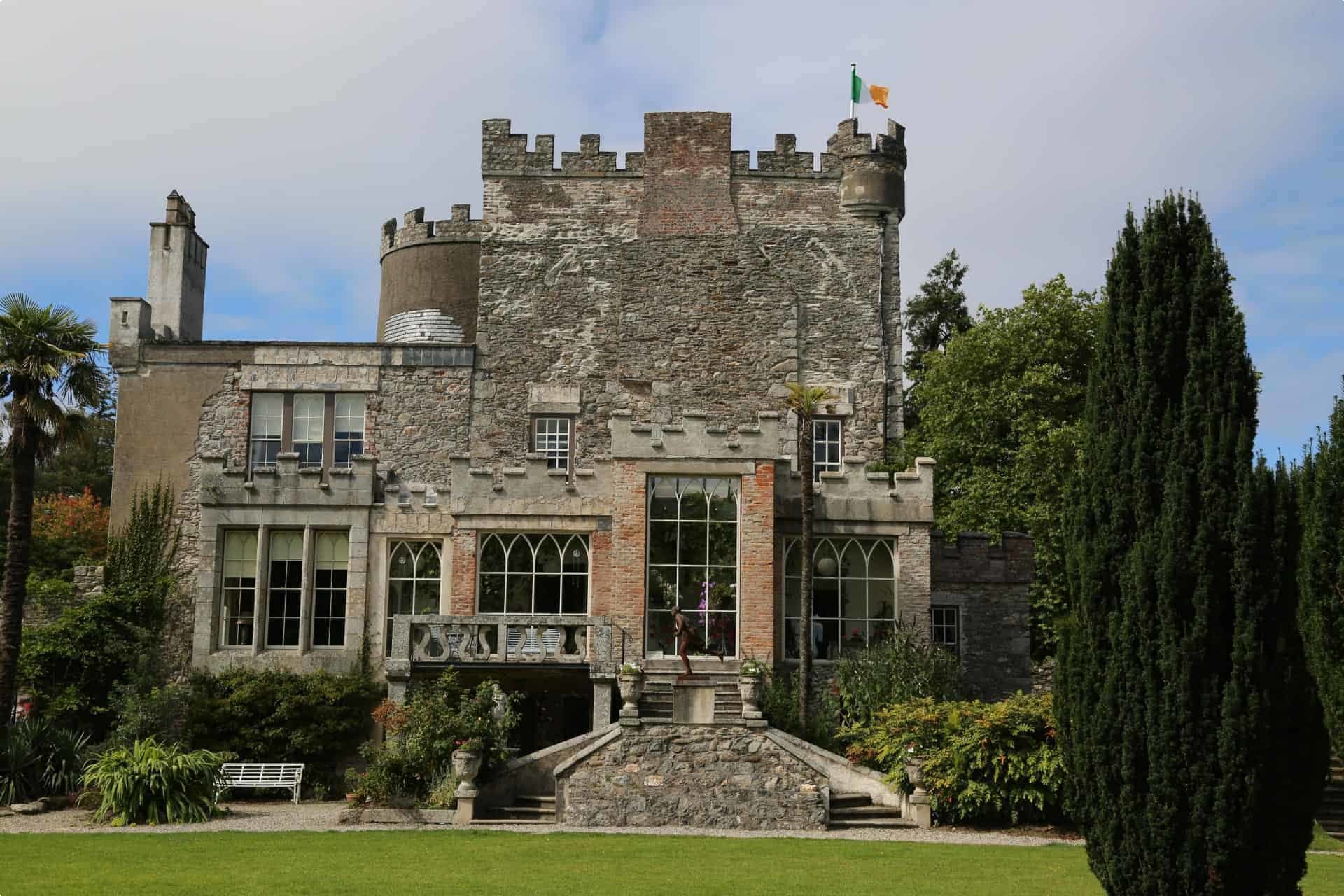
The 17th century Huntington Castle in the village of Clonegal is the ancient seat of the Esmonde family, an old Irish clan which has lived in Ireland since 1192. Originally built as a strategic garrison on the Wexford to Dublin route, the castle was slowly turned into a family home. The family descendants still live in the castle and can be found giving tours to visitors.
The family name has changed twice due to inheritance down the female line. The present family name is Durdin Robertson, direct descendants of the Esmondes. Distinct features of the surrounding estate are the 500-year-old yew walk, a playground (which can serve as an obstacle course), and a working farm.
Inside the castle itself, located in the former dungeon, is the Temple of the Goddess, built in 1976 when the Fellowship of Isis was founded by Olivia Durdin-Robertson with her brother Lawrence Durdin-Robertson and his wife Pamela. The Fellowship of Isis, named after the Egyptian goddess, promotes the Divine Feminine and is a recognised religion with thousands of members all over the world. Visitors can enter the temple during the castle tour, where they will find the sacred well of the pre-Christian Celtic goddess (turned saint) St Brigid, a main altar, and side altars showing different goddesses and zodiac signs.
The house and gardens are open for tours from May to September. More details can be found on their website.
Rock of Dunamase
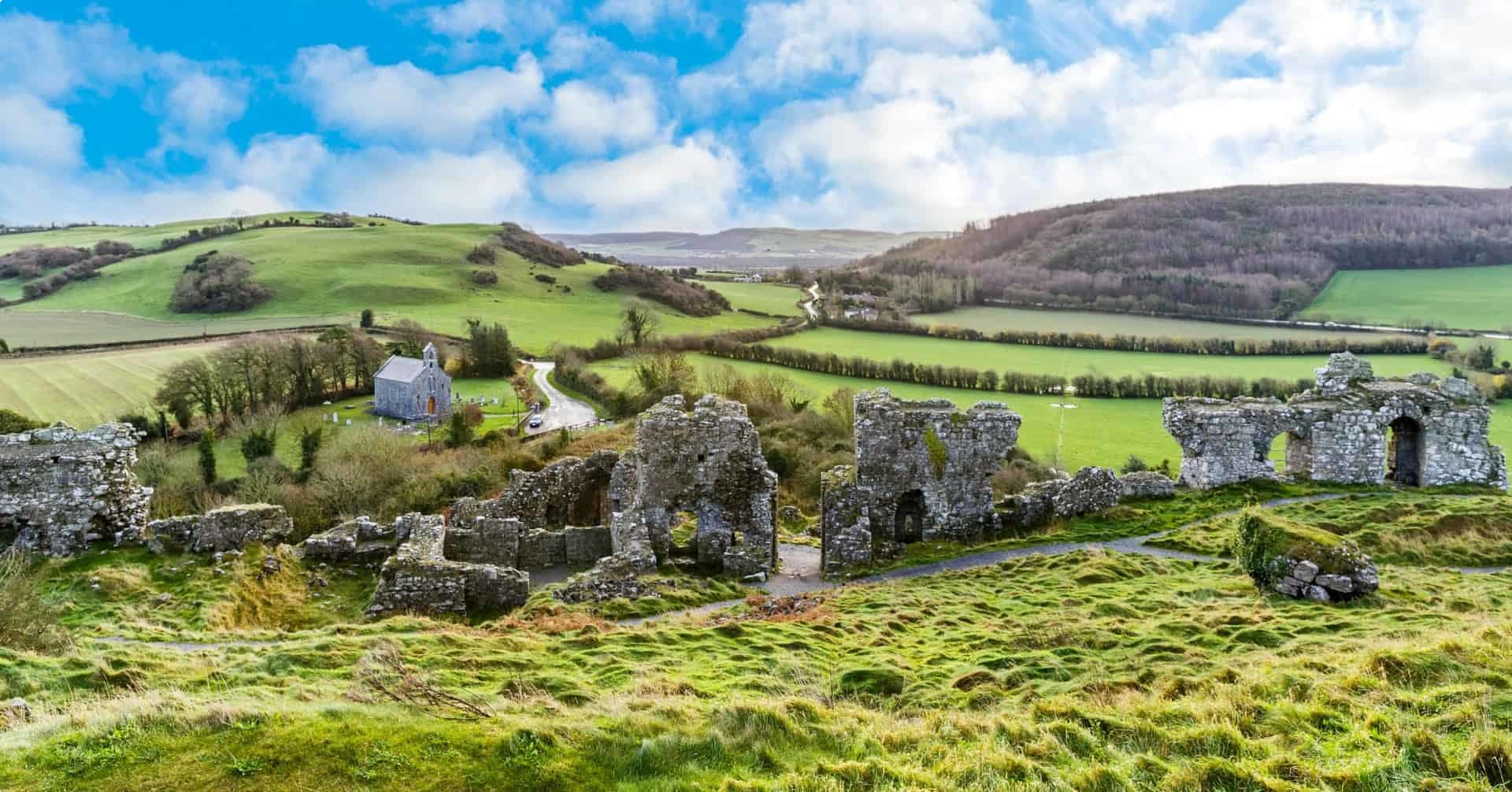
The Rock of Dunamase is a prominent limestone outcrop in County Laois standing at more than 45 metres (150 feet) over the surrounding countryside, offering a commanding view of the county. Dunamase started as a Christian dun (dun is the Gaelic word for “fort”) named Dun Masc (“Fort Masc”). Historical records show Dun Masc was plundered by a Viking raid in the 9th century.
It is famous today for the ruins of the Dunamase Castle. No one knows for sure who was responsible for the castle’s construction. What is known is that Dunamase was part of the Kingdom of Leinster under King Diarmait Mac Murchada, who is remembered now for his treachery by bringing the Normans to Ireland in the 12th century. Diarmait was said to have eloped with (or kidnapped) Derbforgaill, wife of Tigernán Ua Ruairc, King of Breifne, around 1152. Diarmait appealed to the ard ri or High King of Ireland for redress, and returned Derbforgaill along with her sizeable dowry. The next High King however deposed and banished Diarmait, who then fled to Britain and Aquitaine. He sought help from the Normans to take back his crown. The Norman leader Richard “Strongbow” de Clare came to his aid after being promised Diarmait’s daughter, Aife. The arrival of Diarmait, Strongbow, and the Norman forces led to the Norman invasion of Ireland beginning in 1170.
Either Diarmait or Strongbow may have commissioned the building of the castle. When Strongbow and Aife’s daughter married William Marshal, Earl of Pembroke, the castle was given as part of her marriage’s wedding gift. The castle passed ownership until it was destroyed in Oliver Cromwell’s invasion of Ireland (on behalf of the English Parliament) in 1650.

Baylough (Béal Lough) Corrie Lake
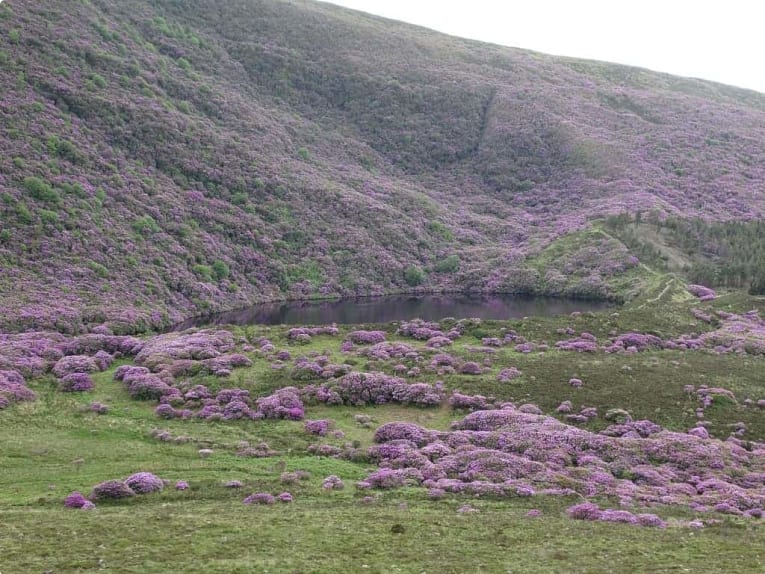
This small lake is located near the highest point of the Knockmealdown mountains. Baylough (Béal Lough) is called a corrie loch (or corrie lake) which is the term used to describe a lake excavated and filled in by a glacier. The journey to the lake itself is already a treat, with gorgeous views of The Vee, The Sugar Loaf Mountain range and Gortacullen Wood. In the summer, the rhododendron flowers bloom around Baylough, surrounding the lake with a stunning purple field.
Kylemore Abbey

The Kylemore Abbey is a Benedictine monastery which was once a 19th century castle residence. In 1867, Margaret Vaughan Henry, wife of a wealthy English doctor (and later County Galway MP) named Mitchell Henry, laid the foundation stone for Kylemore Castle on the Irish estate they bought. The castle was later sold to and served as the residence of the Duke and Duchess of Manchester in 1903.
In 1920, the Irish Benedictine nuns who were forced to flee Ypres, Belgium when their abbey was bombed in World War I, purchased the castle and the estate to serve as their Abbey and home. The Benedictine Community began restoring the castle and the grounds to its former glory, and opened a world-renowned boarding school for girls, the Kylemore Abbey School (Scoil Aine), which operated from 1923 until 2010.
Today, visitors can go on a guided history tour of the Abbey (note that parts of the Abbey are off-limits as they are the nuns’ private enclosure and education rooms), and explore the six-acre restored Victorian Walled Garden, a nearby neo-Gothic Church dubbed a “Cathedral in miniature”, and the Mausoleum which houses the remains of Mitchell and Margaret Henry, the castle’s original owners. Visitors can also go on guided walks to discover more of the 1,000-acre estate, and eat sumptuous meals at any of the estate’s three dining establishments. Click here to find more information regarding tickets and booking a visit.
Kilmainham Gaol (Jail)

Kilmainham Gaol, which opened in 1796 as the county jail for Dublin, saw the detainment of the rebellion leaders from the Irish Rebellion of 1798 to the Irish Civil War of 1922 to 23. The Irish Rebellion was an uprising against British rule over Ireland, while the Irish Civil War was waged between two opposing groups over the Anglo-Irish Treaty, which sought to define the Irish Free State as a dominion in the British Commonwealth. The bloody war, which pitted former comrades of the Irish Republican Army who just the year prior had fought side by side in the Irish War of Independence, ended with the defeat of the anti-treaty group and a deep political divide that still exists in Ireland today.
Convicts also included ordinary men and women, some imprisoned here for petty offences. Many Irish prisoners were held here for long periods waiting to be transported to the British penal colony in Australia.
Today visitors can walk inside Kilmainham Gaol (by guided tour only) and view the major exhibition detailing the prison’s political and penal history. Advance booking online is essential. Read more here.
Skellig Michael (Sceilg Mhichil)

Once relatively little known, the rocky island of Skellig Michael with its distinctive stone huts should now be familiar to avid and new fans of Star Wars–it was used as a setting for Luke Skywalker’s hermitage, as seen in the newest instalments of the saga: Star Wars Episode VII: The Force Awakens and Star Wars VIII: The Last Jedi.
Skellig Michael rises 218 metres (714 feet) from the Atlantic Ocean, 13 kilometres (eight miles) from the coast of County Kerry. A Christian monastery was founded near the highest point of the island in the mid-7th century (though the exact date remains unknown), a truly isolated cluster of stone huts dedicated to archangel Michael that could only be reached by climbing more than 600 stone steps up a cliff. Still, the Vikings reached the monastery in the raids of the 9th century, but the monastery managed to survive until the 13th century when the monks moved to the mainland.
As Skellig Michael is so remote and the monastery is such a demanding climb, the stone steps and monuments are remarkably well-preserved. In 1996, it was included on the list of UNESCO World Heritage Sites. Skellig Michael can be accessed by boat ride, and travel times are dependent on weather conditions. There are no facilities on the island and visitors are advised to wear protective clothing and bring drinking water. You can read more details here.
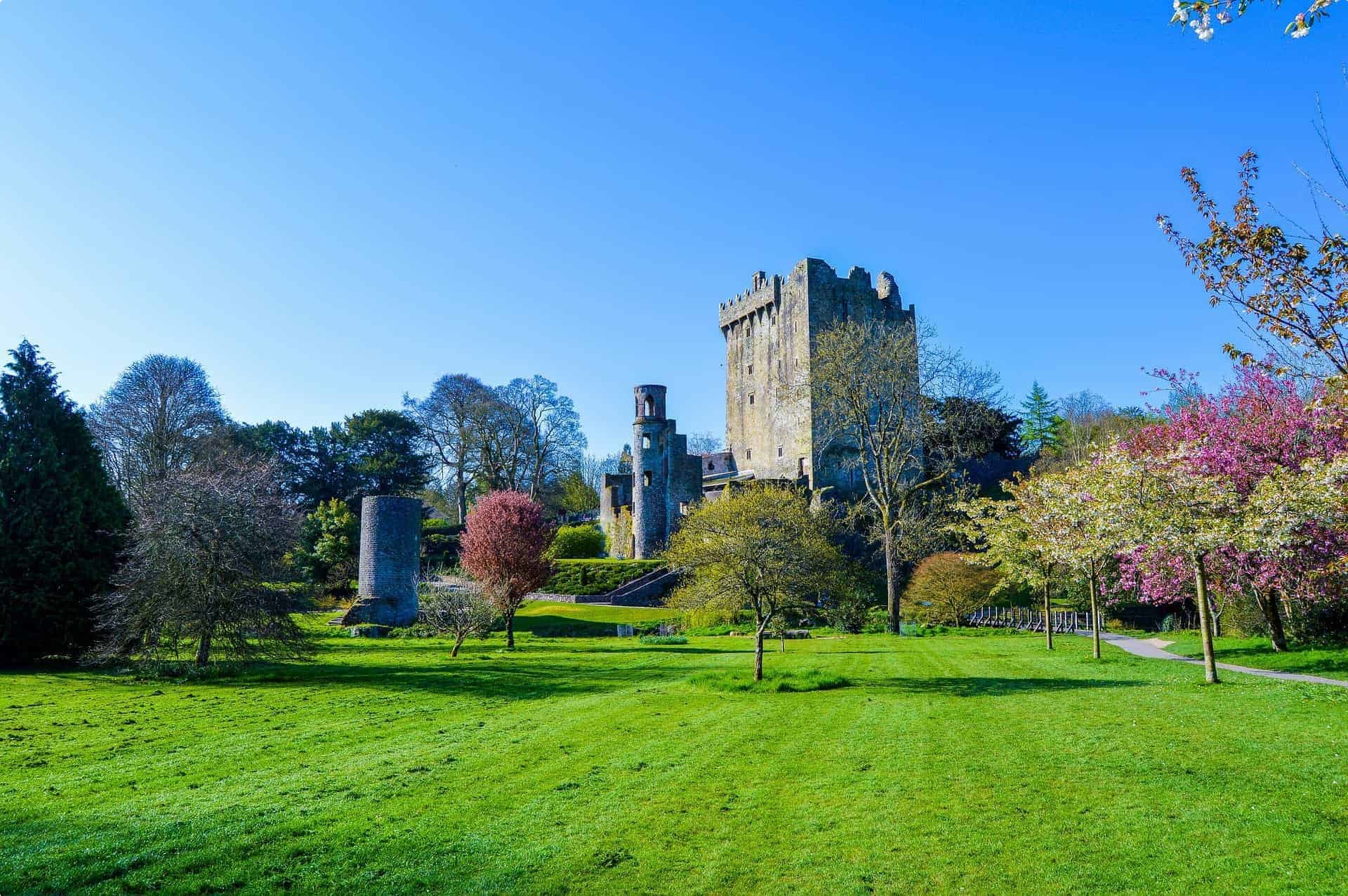
Baltray Beach & Standing Stones
Baltray, taken from an Irish word meaning “town of the beach”, is a coastal village and townland in Louth county. Louth may be Ireland’s smallest county, but it has an unrivalled coastline. Protected and important, an abundance of wildlife, geological features and impressive landscapes stretch 56 miles from Carlingford Lough to the River Boyne estuary at Mornington.
It’s at this estuary that Baltray Beach lies, a vast stretch of sand nestled against the surrounding intact dune landscape in the shade of the Mourne Mountains. Here the beach and sea are wide and open, while also seemingly isolated with little people around. With wildlife abounds, catch the sight of butterflies, woodpeckers, herons, and gannets. Little terns can also be found if you keep an eye out: one of Ireland’s rarest breeding seabirds, they nest at only a few sites on the bay. Each year from May to August part of the beach is fenced by the Little Tern Conservation Project to protect nesting chicks and eggs vulnerable to walkers, dogs, natural predators, and other disturbances.
Perhaps the highlight of the beach (at least for photographers) is the hull of a shipwreck aground here in 1974 during a rough sea storm. In a constant state of decay, the remaining sections are torn and twisted, chiselled away daily by the wild Irish Sea.
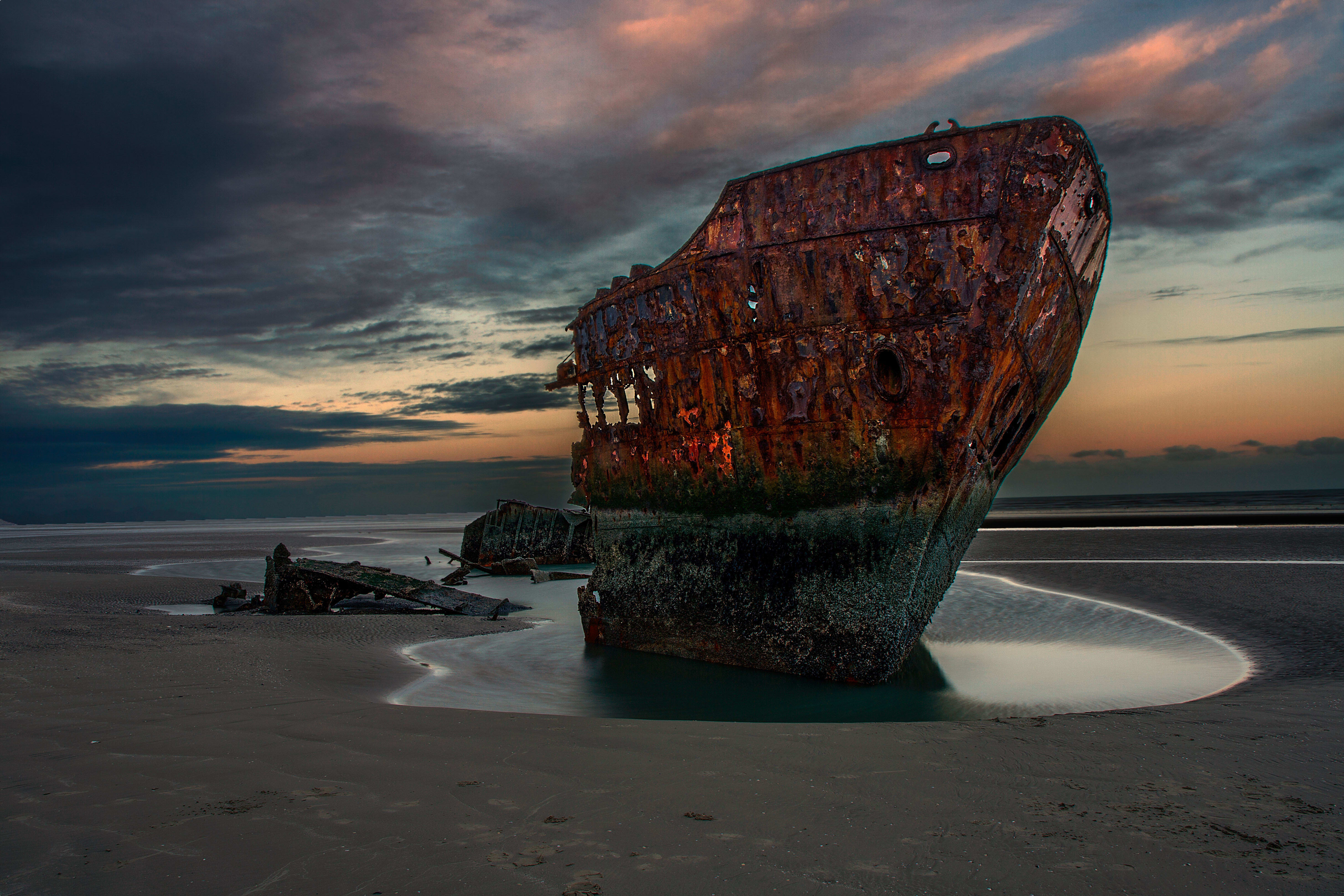
Near Baltray, overlooking the Boyne Estuary, are two standing stones. The megaliths are believed to have been placed there some time in the Later Bronze Age (c. 1400 – 700BCE) to align with the Winter Solstice sunrise. The larger stone of the two is oriented towards and island out in the Irish Sea called Rockabil, which marks the position of sunrise on the Winter Solstice. The landscape is thereby joined in union with the sky once every year, marking the solstice in a unique way.
Tour of Ireland
If you want to know more about Ireland, do join Odyssey Traveller’s tours to the Emerald Isle. Just click through to read the itineraries and sign up to the tour of your choice.
Originally published February 25, 2019.
Updated on February 24, 2021.
Related Tours
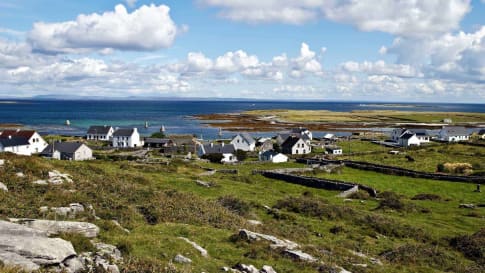
18 days
Aug, Apr, SepSmall Group tours exploring the Treasures of Ireland
Visiting Ireland
An escorted small group tour to Northern Ireland & Ireland, with local guides and itineraries that give authentic experiences Ireland's capital, Dublin, including 1/2 day tour of St Patricks cathedral and Trinity college. Destinations also Aran islands , Kerry plus the world heritage site, the giant's causeway. Ireland tours for singles over 50 and couples.
From A$14,245 AUD
View Tour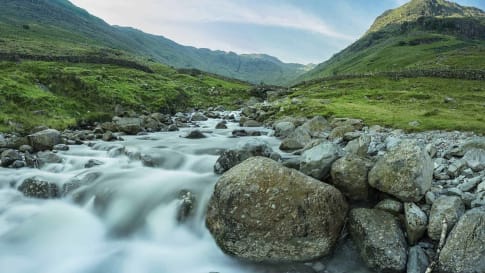
25 days
AugIreland and Lake District walking small group tour
Visiting England, Ireland
A guided small group tour for senior walkers that starts in the capital of Ireland, Dublin. This escorted tour with local guides also explores the Giant's causeway, a UNESCO World heritage site. It transfers from Ireland to Scotland to head to walk in the National park of the Lake district.
From A$15,595 AUD
View Tour10 days
MayGardens of Ireland Small Group Tour
Visiting Ireland, Northern Ireland
Ireland a land of diverse and rich gardens from the dramatic Powerscourt to the impressive kitchen Garden of Kylemore Abbey and the secretive Anne’s Grove. Visit Dublin's historic Botanic Garden to the greenness of Killarney with its rugged Kerry peninsula and charming Muckross House.
From A$9,445 AUD
View Tour

